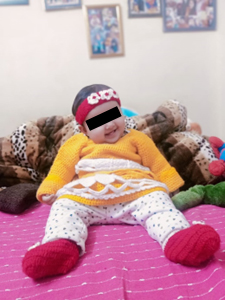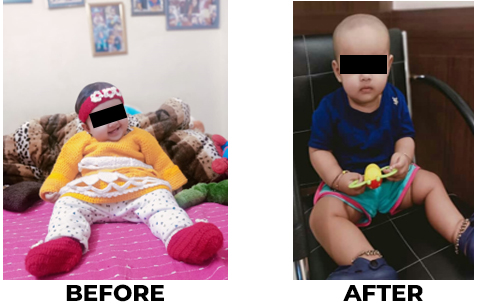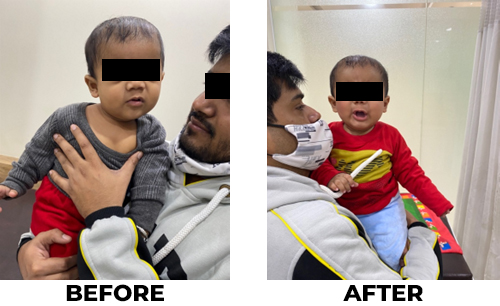Torticollis is a condition in which neck muscles cause their head to twist and tilt to one side. The top of their head may be tilted to one side and their chin may be tilted to the other side.

Types
- Congenital torticollis: During gestation or birth, trauma can occur that causes oedema in the muscle, which can generate congenital fibrosis of the sternocleidomastoid muscle, causing a shortening of the fibers of this muscle.
- Acquired torticollis usually occurs in the first four to six months of your baby’s life or later. You may notice it suddenly or it may come on more slowly. Acquired torticollis may be harmless (benign) or it may be a sign of a more serious health issue.
What are the symptoms of torticollis?
Congenital muscular torticollis
- The child has a limited range of motion in the head and neck.
- The head tilts to one side while the chin tilts to the other.
- Asymmetries of the head and face, indicating plagiocephaly, may also be present.
Acquired torticollis
- There is limited range of motion in the head and neck.
- The head tilts to one side while the chin tilts to the other.
- With a condition called benign paroxysmal torticollis, there may be recurrent episodes, or “attacks,” of head tilting; often these attacks are accompanied by other symptoms, such as vomiting, irritability, and/or drowsiness.
- Additional symptoms vary according to the cause of the torticollis.
Risk factors for torticollis include:
- Family history of the disorder
- Congenital abnormalities of the cervical spine
- Taking drugs that predispose you to muscular spasms
- Trauma
Physical examination
Physical examination is the easiest and most effective means of diagnosis. The most representative assessment methods for assessing torticollis include an assessment of the passive cervical range of motion using an goniometer as well as an active range of motion, and global assessment. Neurological assessment, as well as auditory assessment, are fundamental to exclude other differential diagnoses.
Physiotherapy Management?
Physiotherapy is the recommended form of treatment.
Physiotherapy provide treatment to restore as much normal movement, posture, and function as possible. With proper treatment, 90%-95% of children improve or achieve an acceptable neck range of motion.
Physiotherapy treatment plan will depend on assessment and may include:
- Passive range-of-motion exercises.

- Active range-of-motion exercises.
- Muscle strengthening and functional activities.
- Family education.



